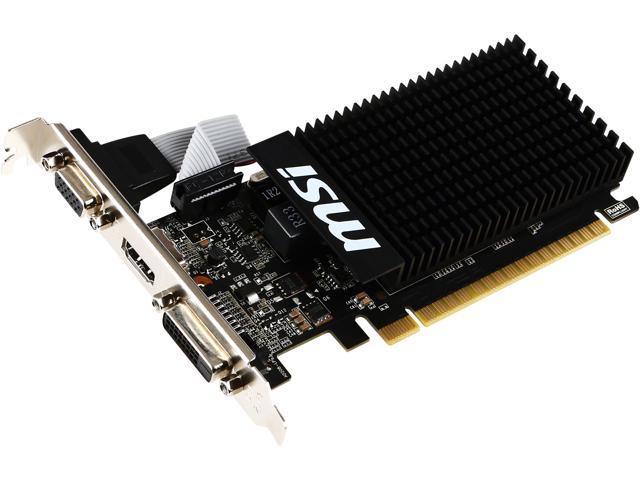The MSI GeForce GT 710 Silent LP graphics card is a low-profile graphics card with passive cooling, which will not prevent you from screwing on an active cooling system (beware! this procedure will void your warranty). Let’s see what this video card is.
Characteristics
Specifications for the MSI GeForce GT 710 Silent LP graphics card were obtained through the freeware GPU-Z version 2.44.0
As you can see in this screenshot, this video card has 1 gigabyte of dd3 memory with a 64bit data bus.
Appearance
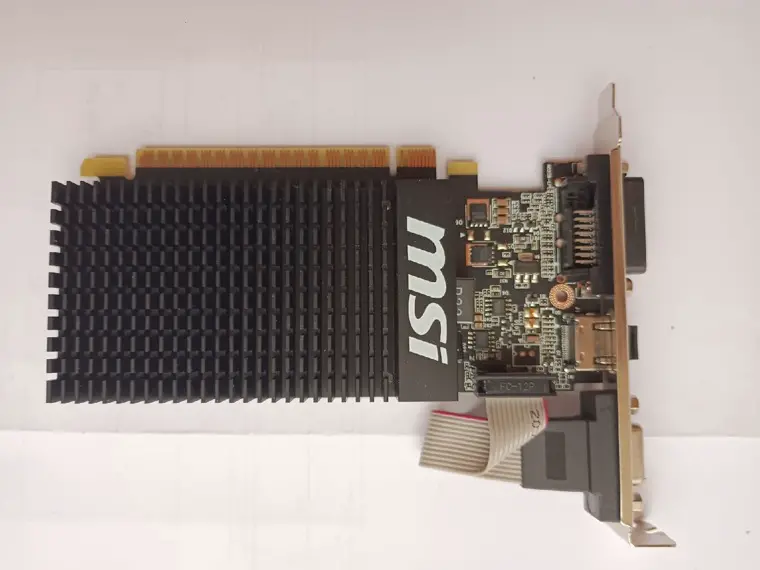
The external design of the MSI GeForce GT 710 Silent LP video card is a rather laconic performance in dark colors, no backlighting. There is the name of the manufacturer “MSI” on the front side of the video card. They could also paint the cable black to preserve the color scheme =)
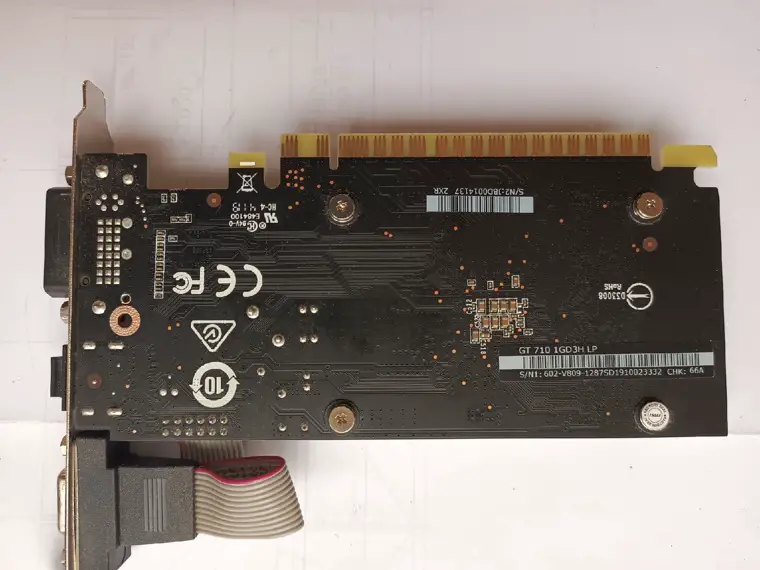
The rear panel is also made in dark colors, there is a sticker with the model name and serial number of the video card.
Cooling system
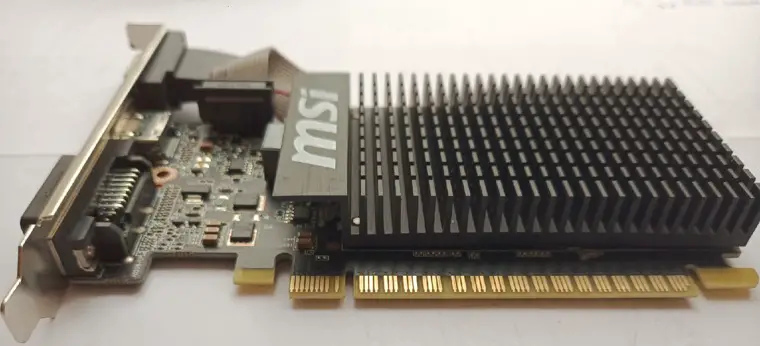
The material of the heatsink of the video card GT 710 1GD3H LP is aluminum, which is noticeably heavy. The radiator itself is painted black.
The edges of the heat sink are tightly fitted to the dimensions of the graphics card itself to ensure maximum compactness.
Video outputs
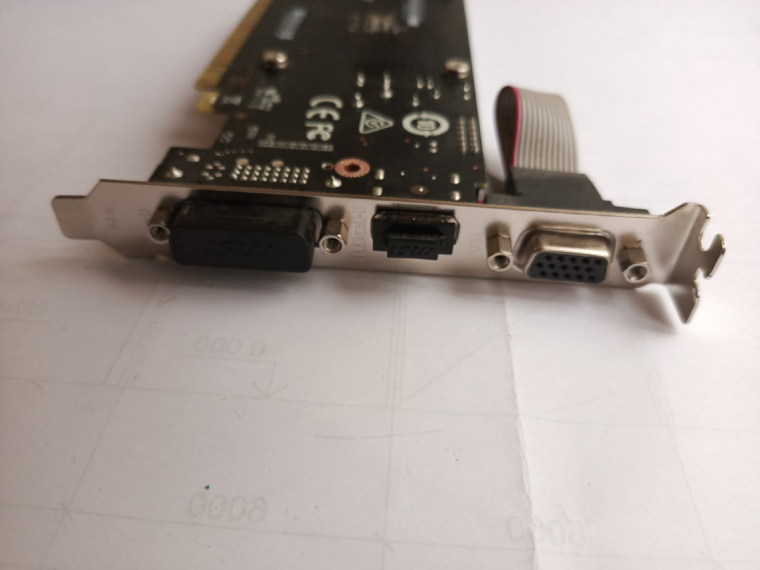
What’s nice is that the GT 710 1GD3H LP video card has three video output interfaces:
- Dual-link DVI-D (no analog interface, more on that below)
- HDMI (version 1.4a)
- D-Sub (VGA).
What is curious is the absence of analog lines (four holes, two above the strip and two below) in the DVI-D interface:
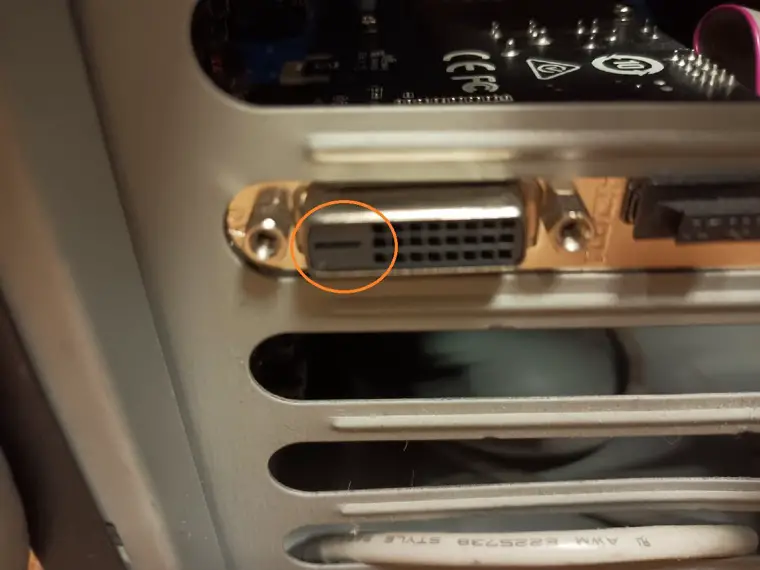
Because of this, it will not be possible to use an analog adapter from DVI-D to VGA, which is rather strange, usually analog lines are present in budget video cards with DVI-D:

Testing in 3D mark
Testing was carried out in the 3Dmark advanced edition program:
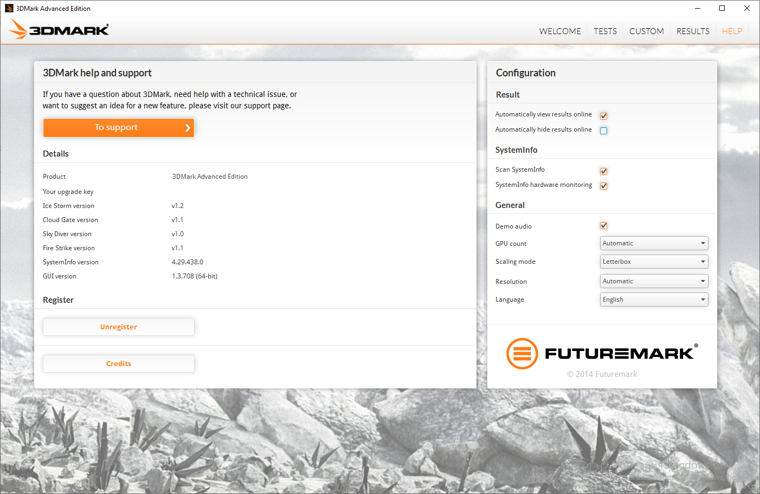
The Sky Diver test was conducted with the following settings:

The results of the Sky Diver test were as follows:
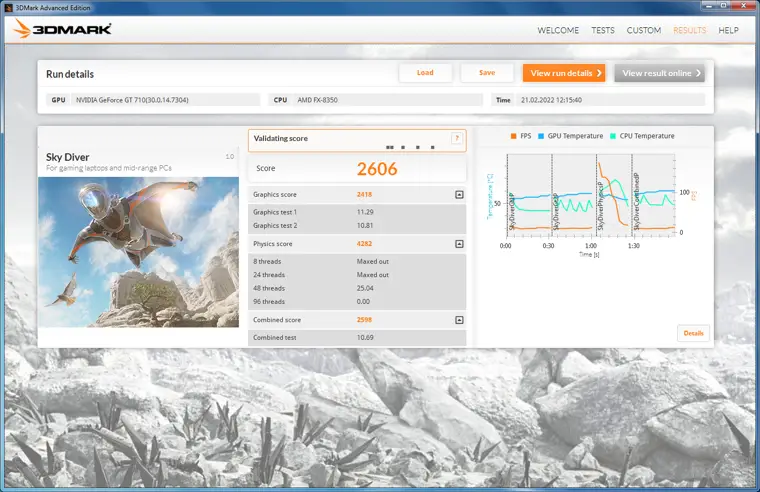
The result of the MSI GeForce GT 710 Silent LP video card was 2418
for comparison:
The gt1030 video card showed the following results: 14500
The gt1050 video card showed the following results: 18548
The Cloud Gate test was run with the following settings:
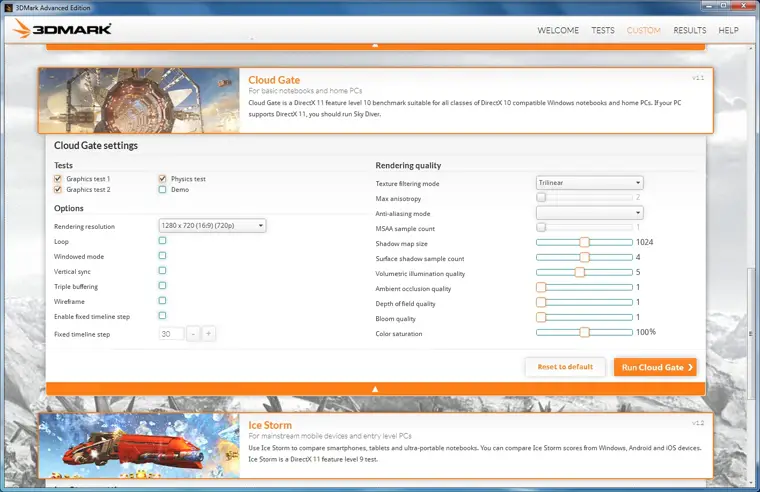
The results of the Cloud Gate test are as follows:

The result of the MSI GeForce GT 710 Silent LP video card was 5212
for comparison:
The gt1030 video card showed the following results: 22069
The gt1050 video card showed the following results: 40922
The Cloud Gate test was run with the following settings:

The results of the Cloud Gate test are as follows:
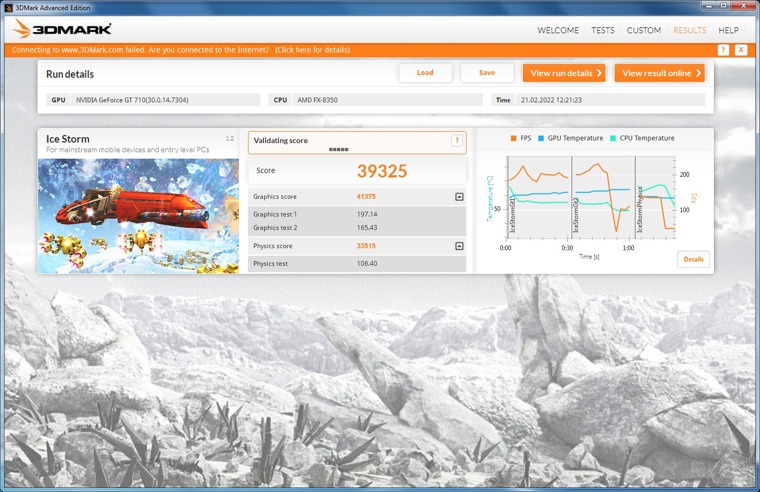
The result of the MSI GeForce GT 710 Silent LP video card was 41375
for comparison:
The gt1030 video card showed the following results: 198178
The gt1050 video card showed the following results: 309683
You can compare these results with your graphics card by downloading 3Dmark advanced edition and testing your graphics card.
Testing in PhysX FluidMark
For testing in PhysX FluidMark, the following application settings were used:

The test results are as follows:

You can compare these results with your graphics card by downloading PhysX FluidMark and testing your graphics card.
Test results in FurMark
For testing in FurMark, the following application settings were used:
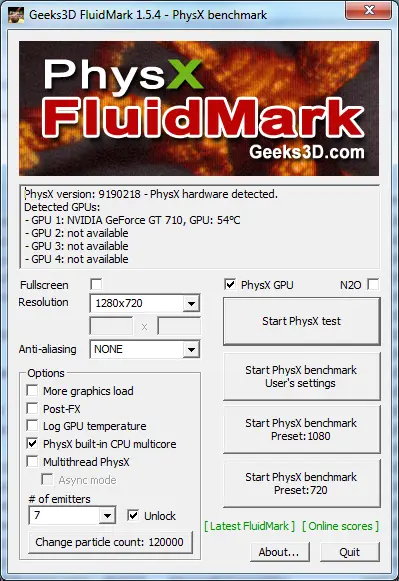
The test results are as follows:

You can compare these results with your graphics card by downloading FurMark and testing your graphics card.
Output
This video card is perfect as a component for a computer in the office or for a child – in a “computer for study”. It is worth seriously thinking about installing an additional cooler or assessing the ventilation of your system unit. Having carried out tests, we can come to the conclusion that this video card should by no means be taken as a “gaming” one. Rather, as a temporary solution or a “plug” for the monitor, just as a tool not for processing graphic information, but as a tool for simply outputting video information.
pros:
- Passive cooling in the form of an aluminum radiator. Thanks to him, the video card is completely silent. And it is possible to install a cooler on top, providing additional cooling (CAREFULLY! Installing a cooler may void your warranty). However, you can go for a trick – for example, fasten the cooler to the radiator with thick threads, or install the radiator on the wall of the system unit case – so that it blows over the video card radiator.
- 36 months warranty. The three-year warranty is a nice bonus, especially considering that with passive cooling, you can easily fry a video card under high load. However, frying it with too active use will void your warranty anyway.
- Low profile graphics card. The low profile will help you assemble your computer into a compact system unit. Lovers of miniatures will especially like it =)
- Three video output interfaces. Suitable for almost any monitor. There are HDMI and DVI-D and VGA. Is this not happiness? They could also add the Display interface for 2+k monitors for the collection.
- Lack of backlight. The video card lacks any kind of backlighting, which will appeal to fans of the dark (however, this feature can annoy those who like to arrange a disco with different backlighting for fixes inside the system unit). It feels like the video card is trying not to stand out and not draw attention to itself =).
Minuses:
- Poor performance. Well, what did you expect from a video card with 1 GB of memory?) Also, the 64 bit bus seriously limits the possibilities. However, this map can be used if your needs lie beyond the processing of graphic information.
- Lack of analog interfaces in DVI-D. It will not work to connect an analog to VGA adapter to use two VGA monitors at the same time. But you can use a digital adapter from DVI-D or HDMI to VGA. Only here the digital adapter costs several times more than the analog one.
- High idle temperature. Without active cooling, the temperature of the video card will depend on the level of ventilation of your system unit. My idle temperature was 50 degrees, which is quite noticeable. Putting a cooler in front of the video card, we managed to reduce the temperature to 43 degrees. You shouldn’t even think about overclocking this video card!





